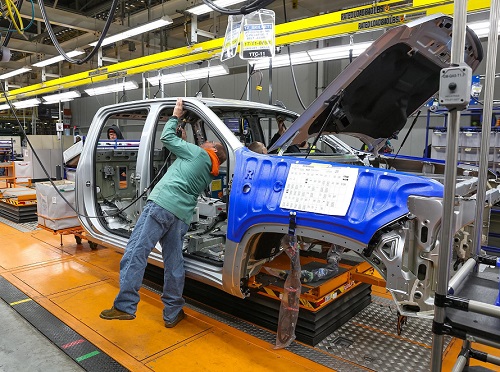The National Highway Traffic Safety Administration recently issued finalized new vehicle fuel economy standards that mandate fuel economy increases for passenger cars of 2 percent annually for model years 2027-2031, with light trucks face increases of 2 percent annually for model years 2029-2031.
[Above photo by General Motors]
The agency noted in a statement that those mandates should raise average light-duty vehicle fuel economy up to approximately 50.4 miles per gallon by model year 2031.
Concurrently, the new rules call for heavy-duty pickup truck and van fuel efficiency to increase 10 percent annually for model years 2030-2032 and 8 percent annually for model years 2033-2035. That should result in a fleet-wide fuel economy average of approximately 35 miles per gallon by model year 2035.
NHTSA claims that those improved standards should save almost 70 billion gallons of gasoline through 2050 and eliminate more than 710 million metric tons of carbon dioxide emissions by 2050.
The agency added that its new fuel economy standards complement new emissions standards for similar vehicle fleets promulgated by the Environmental Protection Agency. NHTSA said it worked closely with the EPA to optimize the effectiveness of its standards while minimizing compliance costs, consistent with applicable statutory factors.
NHTSA began work on the revision of corporate average fuel economy or CAFE standards in response to an executive order issued by President Biden in January 2021.
That order called for a review of the Safer Affordable Fuel-Efficient or SAFE Vehicles Rule for model years 2021-2026 passenger cars and light trucks issued by NHTSA in March 2020 under President Trump’s administration. NHTSA began withdrawing parts of that rule in March 2021.
“I’m following through on the campaign commitment to reverse the previous administration’s short-sighted rollback of vehicle emissions and efficiency standards,” President Biden noted during a press event to highlight that new fuel efficiency rulemaking effort undertaken by NHTSA and EPA at the time.
 Nation
Nation
Registration Open for 2026 AASHTO Washington Briefing
December 12, 2025 Nation
Nation

